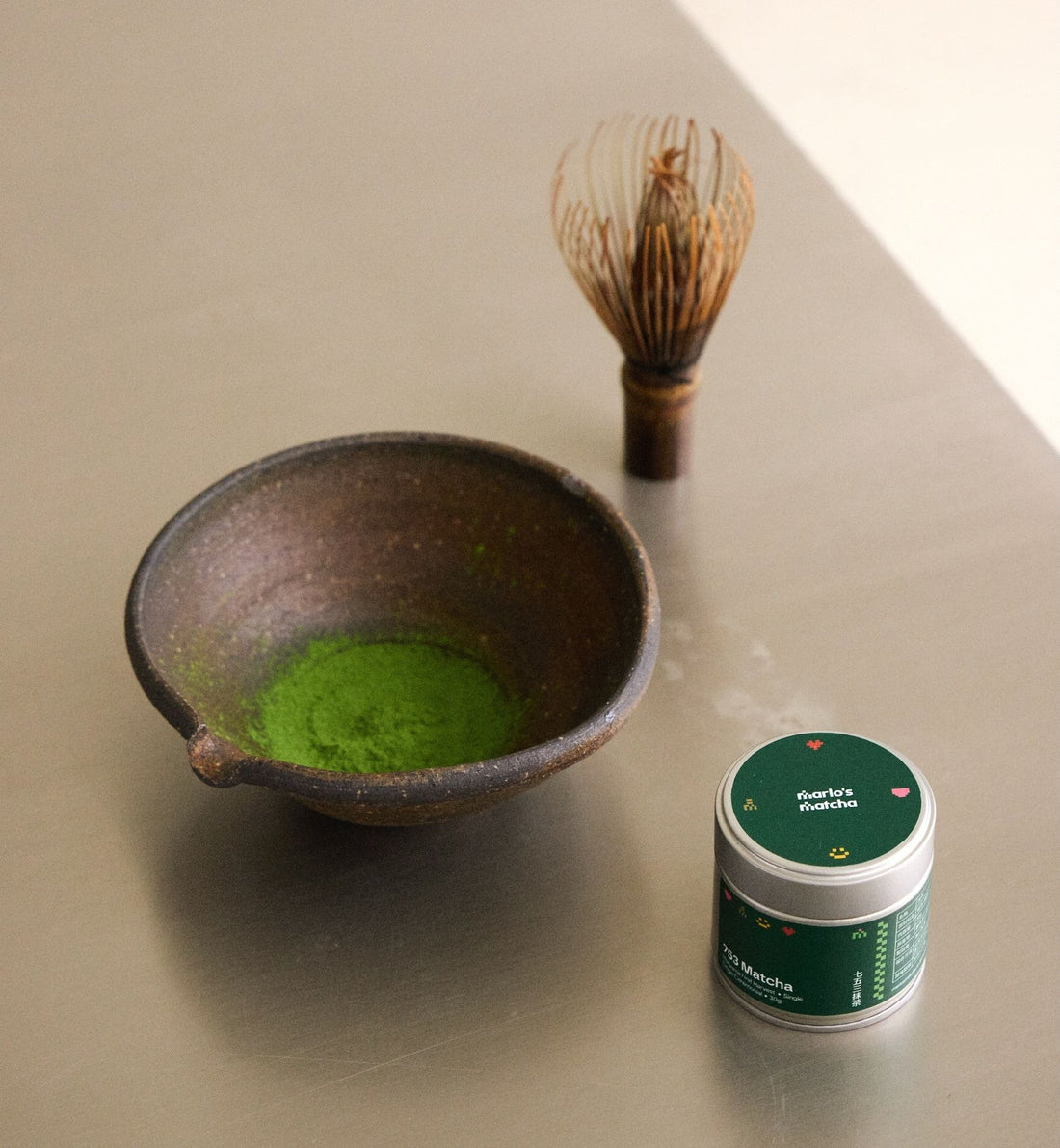What Even Is Matcha?

Green tea and Japan go hand in hand.
But Japan's tea world is actually bigger than you might think, with black teas and rare fermented varieties enjoyed across the country. Still, it's matcha that's become Japan's most recognizable export.
So what makes matcha so special?
It’s not the plant itself, since all real teas (green, black, oolong) start from the same plant, Camellia sinensis. The secret to matcha’s unique taste is how it is processed.
Matcha Is Processed Differently
Matcha begins as shade-grown leaves called tencha. Before harvest, farmers cover the tea plants for several weeks, blocking direct sunlight.
This might seem strange, but it dramatically changes the leaves. Without sun, they produce more chlorophyll (hello bright green color) and ramp up their amino acid production, especially L-theanine.
Once picked, the leaves get steamed right away to prevent oxidation, then dried. The best parts are selected and ground slowly using traditional stone mills. We're talking over an hour of grinding for just 30 grams of powder.
But here's what really sets matcha apart. When you brew regular tea, you steep the leaves and throw them away. With matcha, when you whisk the powder directly into water or milk, you're drinking the entire leaf. This means you get all the flavor, all the amino acids, and all the antioxidants like EGCg.
What Matcha Tastes Like
Matcha brings an earthy, slightly vegetal flavor with natural sweetness and that savory quality called umami. Premium ceremonial grades (like 753 Matcha) take it further with more nuanced flavors.
Umami gives good matcha depth and makes each sip feel substantial. Bitterness adds complexity and balance. Astringency creates the sensation that makes your mouth feel refreshed after each sip. Sweetness from L-theanine is what makes matcha taste smooth rather than harsh.
Your matcha's flavor also depends on where it's grown, which cultivars are used, and when it's harvested. Geography matters just as much for tea as it does for wine.
Key Summary
Whether you whisk yours with just hot water or blend it into an iced latte, now you actually understand what that bright green matcha powder is in your cup.
Matcha is Camellia sinensis leaves that have been shaded, picked, steamed to lock in freshness, and ground into powder fine enough to suspend in liquid.
Want to try ceremonial grade matcha? 753 Matcha is a Honyama First Harvest, Single-Origin Ceremonial Grade Matcha. It's smooth and layered with real depth. The kind that makes you slow down and actually pay attention to what you're tasting.
